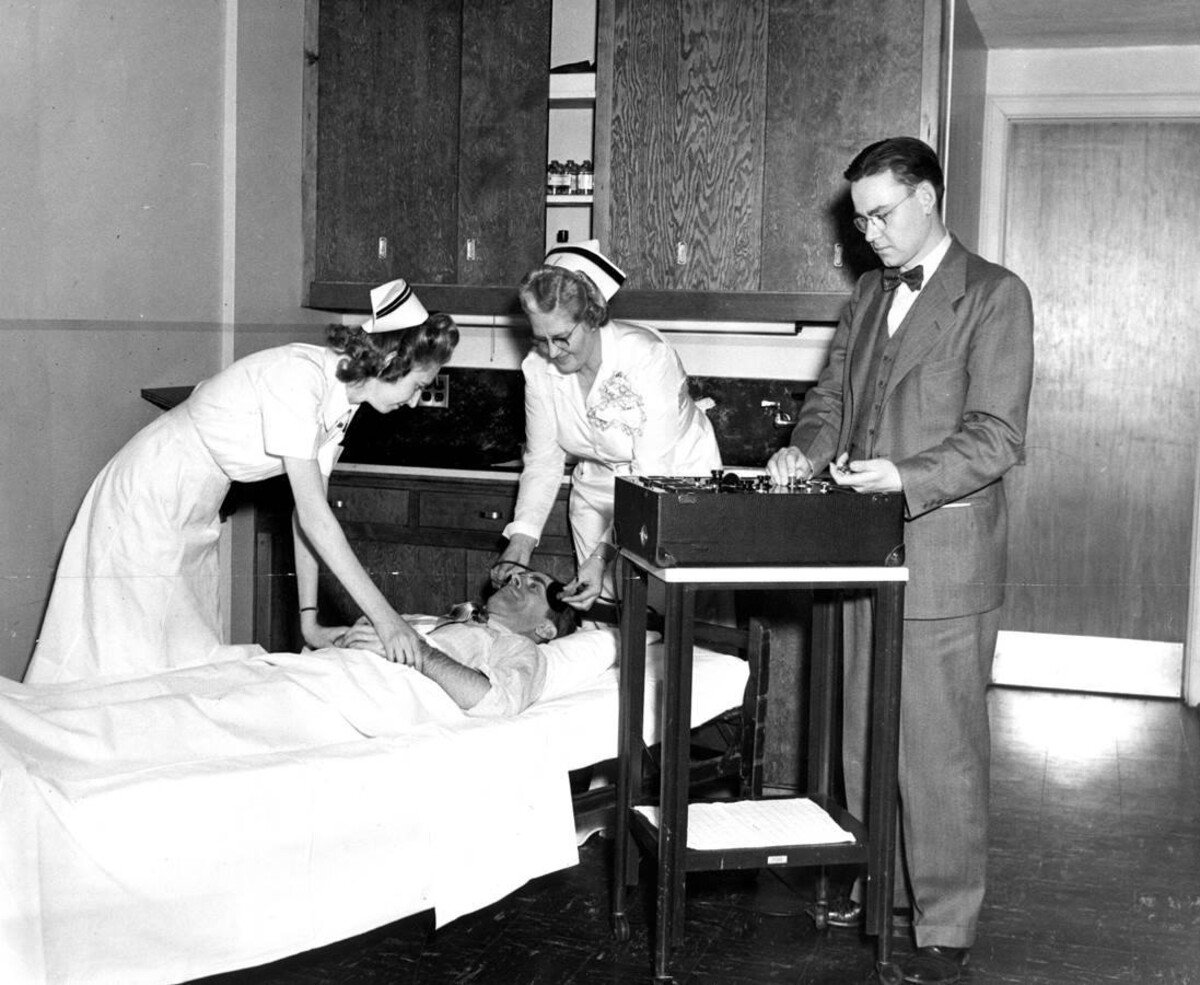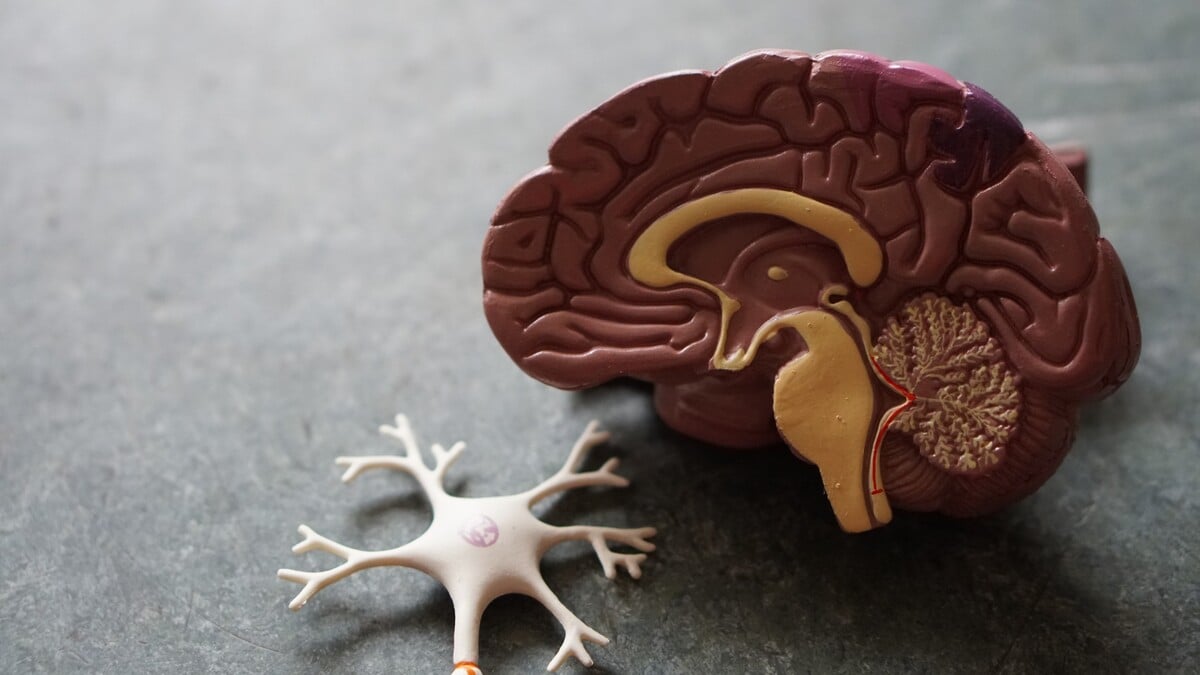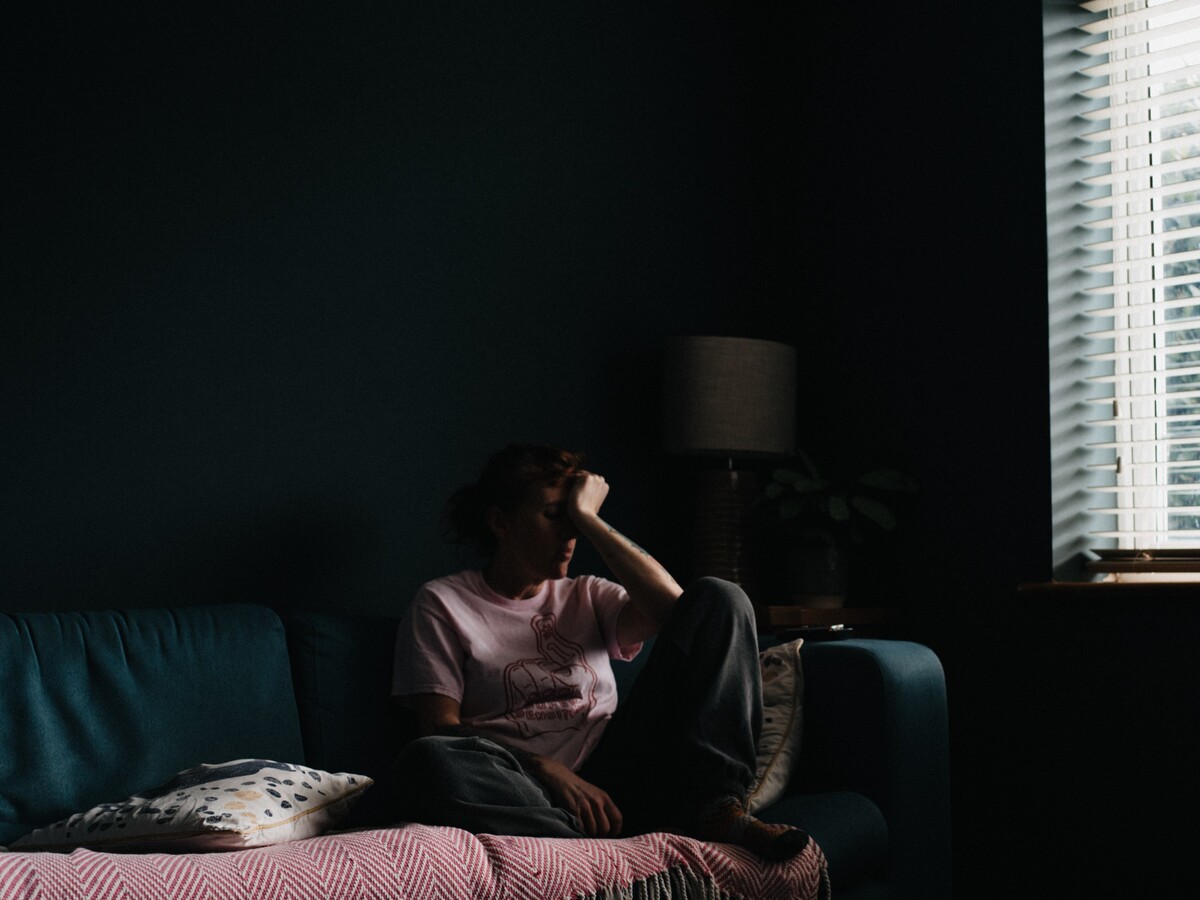 Ozempic can cause vision loss. A new study has shown a link between the drug and eye problems
Ozempic can cause vision loss. A new study has shown a link between the drug and eye problems
Ozempic can cause vision loss. A new study has shown a link between the drug and eye problems
Ozempic can cause vision loss. A new study has shown a link between the drug and eye problems
Electroshock Therapy Is Still Commonly Used For Mental Health Problems
"Patients are often overwhelmed by fears that ECT will 'erase their brains' or 'change their personalities'. Of course, none of this is based on the actual truth," says Jana Greskova, the head of the psychiatric department.
If problems persis, please contact administrator.

The famous writer Ernest Hemingway suffered from severe depression and paranoia in the last years of his life. Doctors treated him with electroconvulsive therapy, but these gradually erased his memory. After twenty sessions, he took his own life just before his 62nd birthday. Before his death, he wrote: "What's the point of destroying your brain and having your memory erased? It's been a great treatment, but we have lost the patient."

Electroconvulsive therapy (ECT), popularly called "electroshocks," began in 1938 in Italy. Psychiatrists at the time assumed that artificial seizures could alleviate the symptoms of depression. The Scientific American portal writes that in the 1950s, electric shocks were also used to "treat" homosexuality, which at the time was considered a mental illness. It was used without anesthesia and often without the patient's consent. Karol Matulay introduced the electroshock method in Czechoslovakia between 1940 and 1941.
Electroconvulsive therapy is still a common part of psychiatric treatment. Approximately 1 million people worldwide, go through with it each year. The ECT devices and the method itself underwent significant modernization in the second half of the 20th century. Today, the therapy takes place under short-term anesthesia with the supervision of an anesthesiologist. The attack should last at least 30 seconds, and the standard pulse width is now considered to be 0.5 ms.
Shock therapy to erase the brain?
No diagnosis would automatically lead to the use of ECT therapy. It is usually used in schizophrenia, depressive disorder, or bipolar affective disorder patients, who suffer from severe anxiety, have suicidal tendencies or don't respond to pharmacological treatment. Simply put, ECT is more of a last resort today after conventional and less invasive treatment methods have failed.
This is undoubtedly the most controversial therapeutic method in psychiatry, perhaps in the whole of medicine. "It is the most questioned and debated approach, not only among the general public but also among doctors and psychiatrists. It is also the only shock method used so far. Despite its proven effectiveness, it is accompanied by a stigmatizing attitude of the public. This attitude stems mainly from historical experience and currently has no objective justification," according to the doctors of the psychiatric clinic in Prague.
"Patients or their relatives are overwhelmed by fears that, for example, ECT will 'erase their brains' or 'change their personalities'. Of course, none of this is based on the actual truth," Jana Greskova, the head of the psychiatric department of a hospital in Roznava, Slovakia and the chief physician of the Procare network and the World of Health for Psychiatry, tells Refresher. "The negative, distorted and stigmatizing picture shows this healing strategy as unscientific and outdated, which has no place in modern psychiatry."

The ECT method is also condemned because it has multiple side effects. The most common are short-term to permanent memory loss and other cognitive difficulties, headaches, toothache and muscle aches, nausea, cardiac arrhythmias, and similar cardiovascular problems. However, the risk of death is minimal. The comprehensive management of a patient undergoing ECT, published by the Ministry of Health, states that the mortality rate is 2.1: 100,000 procedures.
A helpful epileptic seizure
Researchers still disagree on exactly how ECT works. Therefore, we've turned to Jana Greskova: "The essence of the method is to induce brain stimulation using short pulses of electric current. This artificially causes an epileptic seizure in which chemicals are released into the brain. They transmit excitement in the nervous system even in places where the effects of pharmacotherapy do not reach."
Thus, electroconvulsion seems to "adjust" the balance of neurotransmitters in the deepest structures of the brain. This mechanism is supposed to be healing precisely because the imbalance of these carriers in the brain leads to mental disorders.
ECT is also expected to increase blood flow and metabolism in some areas of the brain. Based on these processes, the support of "nerve connection repairs" occurs and creates neural networks (so-called brain neuroplasticity).
"Its essence lies in the fact that some kind of healing of the level of transporters in the brain will increase their activity, ie new connections will be created for the transmission of nerve impulses and chemicals," says Jana Greskova, adding that this therapy is more effective than drugs.

She is in charge of professional staff, while approximately 1,200 to 1,300 electroconvulsions are performed annually at the Slovakian Psychiatric Hospital. To avoid possible hidden complications, patients undergo internal examinations, laboratory tests, and X-ray lung examinations before the procedure. The patient will receive muscle relaxants before treatment to ensure that the shock does not put so much strain on the muscles and bones.
The patient undergoes electroconvulsive therapy every other day (exceptionally daily) approximately four to eight times (more often depending on the severity of the disease). The procedure itself takes place under short-term anesthesia, so the patient doesn't feel anything at all. The treatment lasts a few minutes, and the electric shock itself only a few seconds. "If electroconvulsive therapy is correctly indicated, all mental illnesses will improve," says Greskova.
Patients reportedly ask for it themselves
We also asked the psychiatrist Matus Vircik from the Psychiatric Hospital in Michalovce about his opinion on the topic. He agrees with Jana Greskova and claims that ECT is a very safe form of therapy. However, he notes that films such as Flight over the Cuckoo's Nest have caused society to view ECT as a "torture method."
"It is a type of therapy that is unfortunately the most stigmatized by the broad public. It is often depicted negatively by cinematography and various media. This perception is wrongly attributed, although it is true that ECT has had its negative side in history," says Vircik.
In the hospital, they also call it "sleep therapy." "We have a group of patients who, if their underlying disease worsens, come and ask for it themselves because they have a positive experience with it," says Vircik. "The most common side effects that usually linger next to the overall positive therapeutic effect are mild headaches, muscle aches, or mild transient memory problems."
He adds that they are fighting several false myths. "Most often, it's the belief that ECT damages the brain or that there is permanent memory impairment, which, of course, isn't the case."
"Catastrophic error in the history of medicine"
Many scientists and doctors have tried to ban this therapy in recent years, despite the convincing statements. In the summer of 2020, 40 researchers and mental health professionals opposed ECT, along with family members of patients who underwent electroconvulsive therapy.
A letter sent to the British authorities called for the ECT to be suspended immediately until scientific research clearly demonstrated its effectiveness and safety. They referred to a recent study at Harvard Medical School in Boston, which found no evidence that ECT was more effective than placebo.
The researchers wrote in the study:
The letter was written on the occasion of the 59th anniversary of Ernest Hemingway's death, according to the most famous victim of the ECT. They called shock therapy a "catastrophic mistake in medical history". In the letter, they wrote that they hoped that on the 60th anniversary of Hemingway's death, the United Kingdom would be the first country to ban the method. It didn't happen.
Can't add two plus two after therapy
Sue Cunliff, a 58-year-old British pediatrician, was treated for severe depression at 30 due to her husband's long-term abuse. Doctors evaluated that she was resistant to drugs and prescribed electroconvulsive therapy, which she did 21 times. Cunliff says the therapy damaged her brain and caused severe memory loss that she sometimes can't add two plus two.
The former pediatrician has spent ten years researching ECT. In an article for the Psychiatric Times, she pointed out with experts that although psychiatrists deny that the ECT method could damage the brain, the manufacturers of these therapeutic devices report this risk. Memory loss experts are said to often "blame" depression.

She also found that up to 19 percent of patients suffered from permanent memory loss after ECT, pointing out two studies from 2007 and 2003, according to which 12 to 55 percent of patients suffered from at least six months of memory loss.
However, it is still not clear how big this risk is. Proponents of ECT argue that it is said to be negligible compared to the positive effects of electroconvulsive therapy. Many physicians claim that long-term memory loss is extremely rare, and patients usually report either mild, short-term, or none whatsoever.
81% success rate
A recent study published in September 2021 found that ECT therapy may be even safer than antidepressants or antipsychotics in pregnant and breastfeeding women, mentally disabled, and the elderly. Anesthesiologist Irim Salik and psychiatrist Raman Marwaha studied the effect of ECT on suicidal tendencies.
Although the risk of death is low, according to researchers, therapy can be dangerous for patients with cardiovascular, lung or nervous diseases. It turned out that after the first week of therapy, 38 percent of patients improved. After two weeks, 61 percent, and after the third week, up to 81 percent of patients experienced success.
According to The Conversation, no reliable research shows that ECT works on depression. The Guardian portal also pointed out the lack of data, reporting that doctors cannot agree on whether shock therapy works - some claim that it helps patients, others are fighting against it.
Jana Greskova says that we should look at ECT in the same way as defibrillators, which save people's lives. "Interestingly enough, electroconvulsive therapy, that is, the effects of electric shocks on the brain, is perceived negatively, even menacingly, by the public. At the same time, the effects of the same energy on the heart, the use of defibrillators, are considered a rescuing and positive intervention."
"I guess we feel it's different when an electric current passes through the heart than when it passes through the head. At the same time, we're facing the same common idea, which is to save lives and restore health," says Greskova.
If problems persis, please contact administrator.












